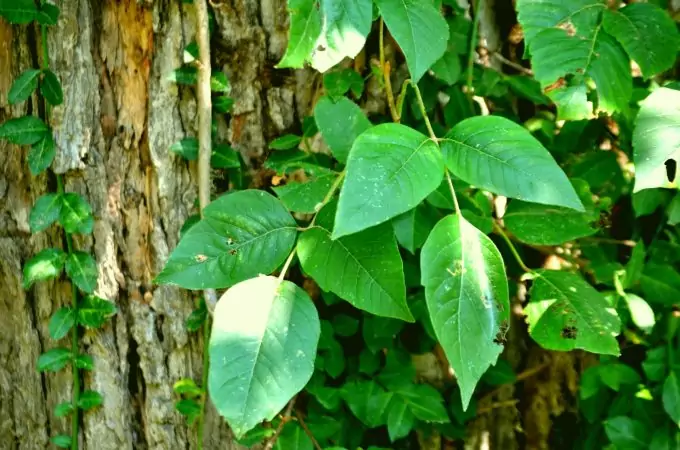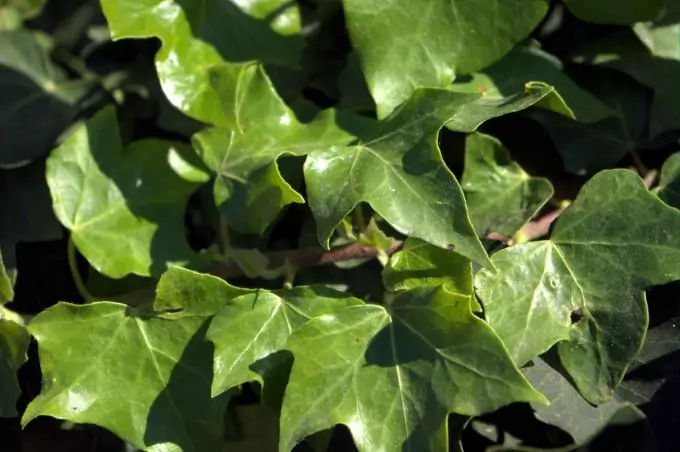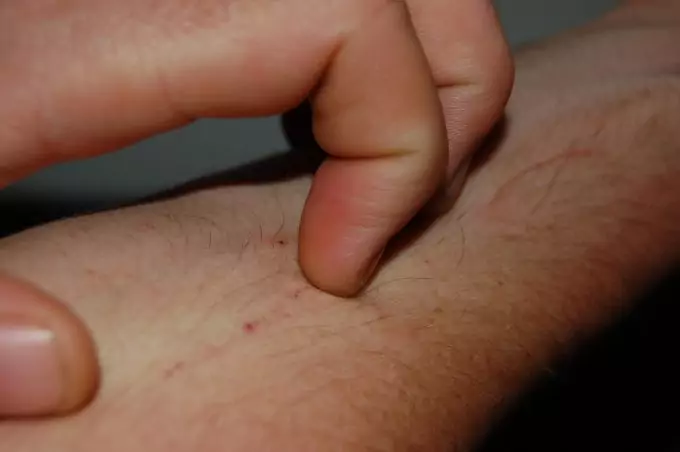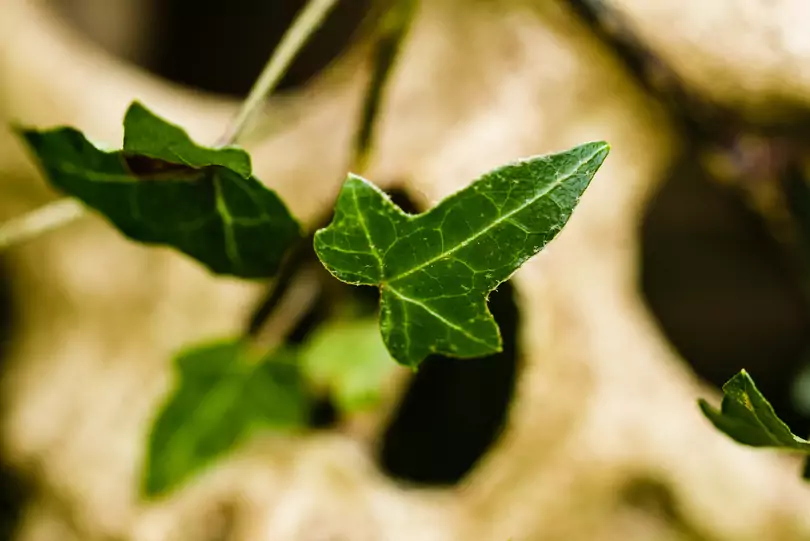Poison Ivy Rash can be a number one enemy to the off-trail hikers, backpackers, and other outdoor activists in terms of skin infections. It has prevailed for many years among other skin infections caused by plants. The rash does affect many people differently depending on the sensitivity level and the amount of exposure. So it isn’t easy to come up with a generic declaration that it can take an hour or so many days because it appears.

We will, however, unfold all the detectable symptoms that can be helpful for one to know how long until Poison Ivy rash appears on the skin after the contact with the plant. We will further discuss various treatment and prevention methods to help you overcome the rash.
What is Poison Ivy Rash?
To elaborate more about the Poison Ivy Rash before getting into its symptoms that could help you know if you have it, we will define it in simple terms. As implicated in the name, it is a rash caused by an allergic reaction (contact dermatitis) to an oily chemical produced by the Poison Ivy plant. This oily resin can also be produced by other trees of the same family, such as the Poison Sumac and Poison Oak. It is found on the roots, stems and the leaves of these trees, and appears as a sticky substance.

Because this oily resin is sticky, it can attach with ease to the outdoor apparels, pet’s fur, outdoor tools, or your skin to cause an irritation in the form of red, itchy and pain inflammation. The end result will be rash which can be widespread in a large area of your skin if it has this oily substance rubbed against it. If you have been scratched by the Poison Ivy plant, the rash can be localized to an area of contact. But if you unknowingly touch the irritant and touch your face thereafter, the rash can be widespread.
The Causes of Poison Ivy Rash
The rash is caused by either a skin contact exposure or airborne exposure with the oily resin produced by the Poison Ivy plant. It is named “urushiol”. As highlighted above, other plants such as the Poison Sumac and Oak are the sources of this sticky oil.
So, if you travel in the wilderness, particularly in off-trail terrains, you’re more vulnerable to this skin rash. Open shoes, short sleeves and short pants are first indicators that you might be exposed to this rash at any time. Basically, the Poison Ivy rash is caused by the following:
- Touching the one of the “urushiol”-producing plants on the leaves, stems or roots. The plants can be potent even if they had died long time ago.
- Touching any object that has been in contact with the plant. This could be another person who has been in contact with the plant or the pet fur, your shoes, clothes or shoelaces. Almost any object on which the oily substance can stick.
- Inhaling the smoke particles after the plants have been burned. The oily resin can attach to the smoke particles and then harm your nasal passage or your lungs.
These are the main causes that can expose you to Poison Ivy rash. Note that the rash can only be caught by skin contact or by inhaling the smoke particles. It is not contagious from one person to another. So, do not distance yourself from whoever has the pus oozing from the rash blisters.

The blister fluid is incapable of infecting anyone upon contact. The only contagious way is when you touch the oily skin irritant on someone’s skin, or you, yourself, spread the rash to other parts of your body by touching the urushiol.
How long does it take for the rash to appear?
After being in contact with the urushiol, it can be as fast as within 12 hours for the rash to appear if you were heavily exposed to the oily chemical of the Poison Ivy, or about 10 days if you had a mild contact. To some people even 21 days can be spent before the rash appears on the skin. The main factor behind this difference is the amount of exposure and the sensitivity level that varies from one person to another.
Even when the rash is about to fade as it is naturally self-limited, the time varies from one person to the next. It can take from 10 days to 3 weeks after it has appeared to fade provided you are not treating it with anything. Well, there are some lotions and other antibiotics that are used to expedite the process of healing the Poison Ivy dermatitis rash. But we’re talking about a mild rash here. A severe one can be more intense, and may take more time before it fades away.

Before the rash intensifies, there are numerous Poison Ivy symptoms that you can spot. Knowing the symptoms helps one to act quickly with remedial medications to counter-effect the impending painful inflammation.
What are the symptoms of Poison Ivy rash?
The following are the common symptoms that may be experienced by the affected. Bear in mind that sensitivity differs, so the same applies with the symptoms; they can be different.
- Itchiness
- Pus oozing blisters
- Swelling around the eyes or the affected skin area
- Redness
- Difficulty of breathing if you were exposed to the smoke after burning one of the plants (Poison Oak, Ivy and Sumac).
- Swelling of the neck, genitals, face or the mouth if the sensitivity and the skin contact are more intense.
For those who are more allergic to the Poison Ivy oily resin, the symptoms will be more severe to an extent of having eyelids shut or the face being swollen. It’s apparent that the rash can really be traumatic if not attended urgently in highly sensitive people.

That’s why it is very important to attend to the more severe rashes as early as possible. Let’s unfold some of the treatments below.
How to treat Poison Ivy rash?
Starting with mild skin rash, it is easy to treat it using homemade remedies. The skin irritation can fade in about 2 to 3 weeks naturally. For a widespread rash with large pus-oozing blisters or swollen face, it can take more to heal on its own. In such instances, it’s therefore mandatory to seek the doctor’s advice. The oral corticosteroid such as the prednisone is often prescribed for severe Poison Ivy dermatitis rash. Other oral antibiotics may be provided depending on your condition.
For self-care methods, please follow the procedure below:
- Do not scratch your blisters because you might cause an infection or worsen them
- Purchase the corticosteroid cream over the counter to apply onto your rash
- Place cool and wet compresses on the affected area to reduce the swelling blisters
- Apply a wet cloth on the rash, and apply a calamine lotion to ease the itchiness
- Take the oral antihistamines so that you can sleep better because the itchiness and painful inflammation may make your night miserable
But, please note, that if you’re suffering from other known conditions such as the sugar diabetes and high blood pressure, you need to take oral antibiotics only under the supervision of the physician. Failure to do that may lead to unforeseen worsening health conditions in your body. The same with applying external skin products, you need to seek advice from dermatologists. Some products may worsen the conditions if applied with pre-existing medical conditions.

If your self-care methods do not yield fruitful results, you can then opt to see the primary health doctor who might eventually refer you to the dermatologist. The following conditions should prompt you to seek medical advice immediately:
- If your skin persists to deteriorate
- If the rash does not fade after a few weeks
- If blisters are oozing fluid and are relatively large in size
- If you are starting to have fever with temperatures over 100 Fahrenheit
- If the rash is too painful and more severe
- If you have difficulty in breathing
- If the Poison Ivy rash has affected your eyes, genitals and/or the mouth
- If you self-care medications have worsened the rash
When getting to the doctor, he/she will be able to diagnose you just by looking at the rash. There are no specific tests or diagnosis methods for this typical rash. Just be prepared to respond to numerous questions such as the following that the doctor might ask:
- After how long did you notice the symptoms of the rash?
- What kind of places do you frequent in the wilderness?
- Have you ever had rash in the past?
- Which medications/supplements have you taken?
- Do you any other medical condition?
- Do you know about any skin allergic reaction?
The doctor can surely help you prevent the recurrence of the rash if you’re enthusiastic about the outdoor adventures. He/she will further prescribe specific antibiotics that will speed up the healing process. A skin care specialist might be needed in some cases, if the allergic contact dermatitis has worsened beyond the capabilities of a primary health care doctor.
Among other prescriptions that the doctor may give you, cortisone is also an important and effective oral medication that can cure the severe rash within 2 to 3 weeks. If you’ve taken the sufficient cortisone, your rash should respond promptly and quickly. But as a word of advice, do not use it if you suffer from diabetes, peptic ulcer or high blood pressure.

It is important to prevent the Poison Ivy rash than to treat it. Treating the rash is just lots of efforts and sweat to end up winning. The situation might be dire if you’ve inhaled the smoke particles of this plant because they can affect the lungs. Below we will equip you with skills on how to prevent the occurrence of this dermatitis rash.
Be prepared for any emergencies. Read our piece on how to put together a DIY first aid kit for you and your family.
How to prevent the Poison Ivy rash?
To successfully prevent the Poison Ivy rash occurring or recurring, please follow our guidelines below:
- Avoid any closure of the plants → it is important to classify these plants among other plants in the wilderness. We will elaborate further on this below to help you spot the Poison Ivy plant. If you find any difficulty in spotting these plants, it is better if you avoid hiking in clustered trees and off-trail terrains. You must opt for the well-groomed paths that are clear of any trees. Furthermore, if you want to pitch a camping tent, do that in an open space to avoid any exposure to the Poison Ivy tree.
- Distance yourself from affected objects → If you have travelled with pets, avoid touching their furs because the urushiol can stick to them when they are busy hunting. Remember that you can easily get the rash by touching the oily resin. Furthermore, if you have stumbled over these plants, knowingly or unknowingly, it’s better that you wash off your clothes, shoelaces in a machine or wash your shoes with a brush thoroughly to avoid any contact with the urushiol. The same applies to your other outdoor tools if you were doing construction work. Do not touch them until thoroughly cleaned.
- Wear protective clothes → wearing long sleeves, vinyl/leather gloves, long pants, quality shoes is also a remedial step towards preventing Poison Ivy rash. The aim is to protect your skin against any possible contact with the urushiol. Other gloves such as the cotton wool gloves may not be helpful in protecting you. See our list of the best protective hiking wear for you to choose from, check it out.
- Remove the plant from your camping precinct → if you’ve spotted a beautiful spot to camp at, but hindered by the Ivy plant, you can remove the plant completely from the roots. Just wear your protective gloves to execute that task. After removing the plant, dispose it far away without touching it or burning it. Even after a few years later, do not touch the plant because it can still be potent. Remember to wash your gloves with a detergent after using them in removing the plant.
- Wash your skin completely → if you have been exposed to the urushiol, you need to gently wash your affected area with warm water and soap to remove the skin irritant and then rinse. Do not forget scrubbing under your nails because that’s where the resin can remain and then spread to other parts of your body. If your pet shows some oily chemical on its fur, you can also wash it with soap and water.
- Apply the barrier cream → there are some skin lotions that can be applied to act as a barrier between your skin and the plant’s urushiol. Oftentimes, you can find them over the counter at pharmacy stores.
These are the common ways to prevent Poison Ivy rash on your skin. Knowing the tree and its similar plants is helpful to avoid any exposure to it.

Image Credit: verywell.com
As we promised above, we will help you spot the difference below.
How to spot the Poison Ivy Plant?
Poison Ivy Plant is native to North America. So, if you like frequenting that location for your outdoor adventures, you have to be vigilant. Normally, the plant may be found with 3 spoon-shaped leaves. It can cling onto other trees or grow independently as a shrub. You can find the leaves in groups of 3 with the center leave having a longer stem than the others. Check the picture below to relate to the tree that how does it look like.

Risk factors of Poison Ivy dermatitis rash
The risk factors of getting you exposed to the urushiol are the outdoor activities such as the following:
- Hiking
- Backpacking
- Construction work
- Farming
- Hunting
- Gardening
- Camping and many more
There are many risk factors that can contribute to this typical rash. Please note that the growth of the Poison Ivy plant is not limited to the forest, but can also grow in your yard.

So you need to be vigilant when you’re cleaning your yard or doing gardening. Even your dogs that like hunting in the wilderness can come with the oily resin of the Poison Ivy tree and then infect you without you actually going outdoors.
Is Poison Ivy rash contagious?
Do not distance or reject other people who suffer from a Poison Ivy rash because of the fear of getting the infection through the blister fluids. The fact is that the rash is not contagious from one person to another as long as there isn’t skin contact. Even if the person has inhaled the smoke when the plant has been burned and then cough next to you, there’s no scientific proof that it can be contagious.

The only way that it can be contagious is when you in fact yourself. If, for example, you keep scratching the affected area, the urushiol can be transferred through your nails to another skin area. You can infect your whole body unknowingly if you do not wash off the oily resin thoroughly.
Expert Advice
Before you treat the blisters when they’ve swollen intensively, we recommend that you use the moist compresses first. You can ask for over-the-counter solutions from the pharmacist that can compress the blisters before applying the cream. That way the healing process will be expedited. Applying the cream on its own on large blisters may not be that effective in expediting the healing process.
After the swelling has been solved, you can apply the creams needed to get rid of the rash. And when bathing, please avoid very hot water because it is not good for the rash. Yes, it can calm the itchiness, but certainly not good for your skin.

When heading out to a location wherein Poison Ivy plants are said to be ubiquitous, we recommend applying the Ivy block lotion. It will help prevent the skin contact. If you mistakenly get an exposure to the urushiol, we recommend washing the affected area with “Technu” liquid. The Jewelweed plant can also be helpful by rubbing it on the affected skin because it will get rid of the sticky resin before it causes a rash on your skin.
Final Thoughts
The Poison Ivy rash can be a misery for outdoor enthusiasts. Dermatologists, as the skin care professionals, say the rash can normally appear from 5 to 21 days after exposure. However, if you were repeatedly exposed to the plant’s urushiol, the rash can appear as quickly as within 12 to 48 hours. The situations differ from one person to another due to the difference in skin allergies.
So, to win the battle against the Poison Ivy rash, you need to be vigilant about where you travel to or camp at. Check out our article on some common sense hiking tips for you to consider. Take cognizance of the prevention methods we’ve discussed above to stay out of danger. If mistakenly exposed to the oily resin on your skin, try to wash it off completely using soap and lukewarm water, and then apply cream or take antibiotics under the doctor’s supervision. Those with known extreme conditions should not opt for the self-care oral methods without the doctor’s attention.
For additional safety, our article on how to get rid of poison ivy is a must-read, so check it out.

If you have any further questions, please post in the comments section below. We will gladly respond to you.








We arrived late at a certain camping site and we had to set up tents in the dark. Later into the night, I started scratching my knees and legs and I realized that I must have had contact with these wretched plants. It was the longest night of my life. I tried all ways to ease the pain, including pouring water on my legs but they did not stop itching and one of my friends told me not to scratch myself any more. In the morning, I could not bear the site of the rash; I had to cut short my trip to visit a doctor.
Wow! That’s crazy! Thanks for your story!